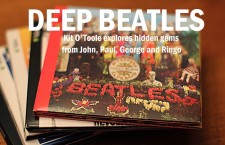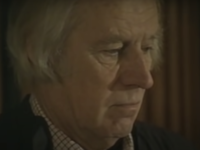Actually, I thought I knew quite a lot about the Beatles. I felt that I had been there from the start. After all, I watched them on Ed Sullivan in February 1964, and was immediately and forever changed. I followed the band and its music like no other. When Hunter Davies’ biography of the group was published in 1968, I devoured it — studying the official account of the Beatles’ rise to fame and conquest of the world.
Other important books arrived — Roy Carr and Tony Tyler’s Illustrated Record, Philip Norman’s Shout!, the Beatles’ Anthology project, plus individual group member biographies and a plethora of interviews. My shelves began to sag with various recordings of their music, accepted canon and beyond. In short, I thought I was covered on the topic of the Beatles.
Then, in 2013 it was announced that Mark Lewisohn was preparing to publish the first of a three-volume history entitled The Beatles – All These Years, Vol. 1: Tune In. In his end notes, the author describes a conversation he had with the late Beatles insider Neil Aspinall, who asked: “Does the world really need another book on the Beatles?” Lewisohn convinced Aspinall that this one was needed, and he has more recently convinced me.
Tune In appeared in England and the United States simultaneously, but in different forms. An expanded edition was available in the Beatles’ homeland. Loath to read truncated versions of anything, I waited for a U.S. publication of Mark Lewisohn’s full text. When it was not forthcoming, I sought out the British printing. No small task, I discovered.
Perhaps there is a reason why the publishers of The Beatles – All These Years, Vol. 1: Tune In anticipated a smaller audience for the longer read. While the American edition is 800 pages, the expanded U.K. version checks in at 1,530 pages. Press notices announced that the expanded edition contained several hundred thousand more words than its U.S. counterpart. These descriptions usually carried the hint of a gleeful smirk: Who could possibly need this much information on any music group – even the Beatles? But wait, this is Vol. 1! These 1,500 pages only take the band through 1962, more than a year before their U.S. debut.
When friends would ask me how the book was coming along — for, after finally acquiring a copy, I loudly proclaimed my summer reading endeavor — I would say, “I am on page 300: Paul and John have just met.” Or, “I am on page 700: George is now in the band.” Well meaning chides were common, such as, “Does it say what they had for breakfast every day?” While Mark Lewisohn does not include such culinary lists, his level of worthwhile detail is without precedent. This book offered me previously uncharted vistas of relevant information on a band I thought I knew so well.
Here are seven items of importance that struck me when reading the first volume of Mark Lewisohn’s expanded The Beatles – All These Years, Vol. 1: Tune In. There were many others.
Brian Epstein:
– The timing of manager Brian Epstein’s entry into the Beatles’ story was more critical than I had imagined. Shortly before Epstein became fascinated with the quartet, the Beatles were in danger of splitting up. They had proven to Liverpool and its surrounding areas that they were a band without peer. But unable to break into the distant London market, and having no further outlets and opportunities for growth, Mark Lewisohn tells us that their live performances were on the verge of becoming stale. Epstein’s involvement gave the group a shot a confidence and, more importantly, new audiences to conquer. His management allowed for the group’s renewed upward trajectory. We would not have heard of the Beatles without Brian Epstein’s ceaseless dedication to their career.
George Martin:
– Three things leap out: George Martin was an extremely inventive record producer who was already in the midst of a successful career before encountering the Beatles. Martin was not thrilled about signing them – a decision over which he had no real choice. And, once involved with the group, George Martin wanted either John or Paul to be the singular focal point: John Lennon and the Beatles, or Paul McCartney and the Beatles (like Cliff Richard and the Shadows, among others). It soon struck Martin to just leave them alone, as the group they already were.
Pete Best:
– It was George Harrison who pushed hardest to replace drummer Pete Best with Ringo Starr. George also made sure that Ringo was integrated fully into the group, going so far as to orchestrate alternating sleeping arrangements when the Beatles were playing road gigs. Brian Epstein was initially opposed to the switch in drummers; John and Paul were uncharacteristically timid about sacking Pete Best, even though they preferred Ringo’s drumming.
John Lennon:
– It was John’s band. I always knew this, but it was really John’s band. This takes nothing away from the importance of George, Ringo, or — most crucially — Paul. And in spite of their all-for-one attitude, and the decisions they made as a foursome, John was the leader. He started the group, and the other three members almost always deferred to him. At least at this point in the Beatles’ history.
Paul McCartney:
– Paul had ambition and natural talent. Even so, John had to work hard to get him to commit fully to his group. Paul was reluctant to give up the steady pay of a workman. This, coupled with a father who openly disliked “that John Lennon,” made Paul’s decision to join John neither simple nor easy, as each Beatle would later acknowledge.
Their Influences:
– The Beatles did not receive American records from sailors returning to the port of Liverpool from the U.S. This frequently repeated story makes sense, but is fiction. Instead, John, Paul, and George worked hard at finding new material by scouring records shops. They scrutinized the information printed on the labels of 45 rpm singles, using for their guide the names of performers and songwriters they admired. The Beatles sought out high quality B-side songs from these singles to incorporate into their performances. These numbers helped provide the remarkably large repertoire that, along with so many other things, set the Beatles apart from other local bands.
Their Songs:
– Although now nearly unbelievable, Paul would often apologize to the audience at Liverpool’s Cavern Club before performing a song that they themselves had written. John Lennon and Paul McCartney did not set out to be songwriters, and their original compositions came infrequently during the first years. Brian Epstein did not offer to manage them because of their potential as songwriters. The Beatles were performers, captivating each audience they encountered. Even as Tune In reaches its conclusion, and the Beatles are beginning to write hits for themselves like “Love Me Do” and “Please Please Me,” the group is still primarily playing songs by others that interest them. This would remain true during the white hot glare of Beatlemania, when their set lists continued to include some of the American rock and roll numbers that they first performed in the clubs of Europe. I used to find the high number of these non-Beatle compositions in their live shows frustrating, but now their inclusion makes more sense: The Beatles never abandoned their roots.
And this is Mark Lewisohn’s gift — being able to make greater sense out of a story that we have lived with most of our lives. This first volume of the biography is especially impressive for its ability to contextualize so many elements that occurred during the band’s genesis. Reading The Beatles – All These Years, Vol. 1: Tune In, I was often drawn back to the earliest of my Beatles recordings — material on disc one of the Anthology series, such as “In Spite of All the Danger.” As I finished the book, I even put on the low fidelity live set from the Star Club in Hamburg, recorded December 1962, the month that Vol. 1 ends. Armed with an informed narrative, I found these early recordings all the more engaging.
I thought I knew a lot about the Beatles, and maybe I did. But The Beatles – All These Years, Vol. 1: Tune In has increased my level of knowledge about, and appreciation for this group — an appreciation that was never low. I look forward to learning more in Mark Lewisohn’s next volume.
Tom Wilmeth is the author of ‘Sound Bites: A Lifetime of Listening,’ which has earned raves from the likes of Gary Burton and Hal Holbrook. It’s available now from Muleshoe Press via Amazon.
- ‘Cold War Country,’ by Joseph M. Thompson: Books - December 2, 2024
- Acknowledging an Influence? Or Grounds for a Lawsuit? - August 9, 2024
- Dickey Betts’ Star Rose as the Allman Brothers Band Grieved - April 19, 2024




A great summary of why it is such an important book. Well done for persevering until you got a copy. The work of the historian is to bust myths, in my opinion, and there are many Beatles myths that are hard to shake. One thing that really struck me was the constantly noted shortcomings of Best; his sacking was no surprise to anyone with ears who has heard his recordings (Love me do at Parlophone in June 1962 in particular).
As an American, did you find the explanation of the significance of the 11 plus and Grammar school system enlightening? Nicholas Schaffner for one seemed to really struggle with this.
Finally, in terms of Epstein and Martin, I agree their importance cannot be understated, but for me it is what they didn’t do as much as what they did.
James: The explanation of the 11 plus system and the Grammar school sections were indeed enlightening. I did not realize their significance before. I assume a lot of this material is cut in the shorter version of the book, but this information is definitely part of the story. Thanks, TWilmeth